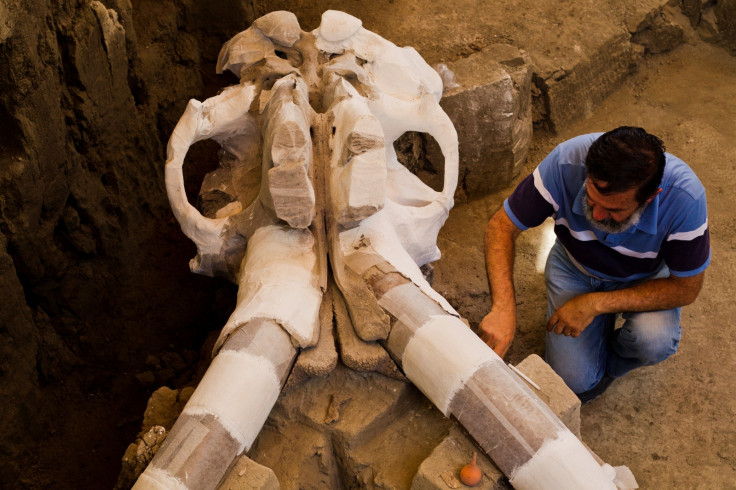Subway construction work uncovers 10,000-year-old mammoth fossil underneath Los Angeles
The artefacts were found during the extension work of the city's Metro Purple Line.
Construction work being carried out to extend the Metro Purple Line subway in Los Angeles has led to the discovery of a trove of fossils. Over the past three years, the crew working on the project found a collection of ice-age era bones that date back 10,000 years to the Ice Age.
Palaeontologist Ashley Leger has been working with a company contracted by Los Angeles' transportation department and was on call to identify the most recent discoveries, which included a prehistoric rabbit's jaw, teeth of a mastodon, mammoth tusk, camel foreleg, bison vertebrae, tooth and ankle bone from a horse, and the skull of a younger mammoth.
"It's the one fossil you always want to find in your career," she said of the skull, describing the find as a "dream come true".
The fossil has been moved to the La Brea Tar Pits and Museum where assistant curator Dr Emily Lindsey called it "remarkable", especially considering that the skull has both its tusks still attached.
Researchers were able to estimate that the Columbian mammoth was 8-to-12-years-old. They have named it Hayden after the actress Hayden Pannetiere.
"Fossils are a treasure for the public, and we've worked it into our contracts so we can work closely with palaeontologists," Los Angeles' transportation department spokesman Dave Sotero said. The authorities are being extra careful with the project so that fossils may be removed intact and without any damage.
"They're making sure that they're recovering every single fossil that could possibly show up," Leger said. "They call me anytime things are large and we need to lead an excavation."
Similar collections of fossils have been found at various construction sites around the country. Earlier, part of a mammoth and a grey whale were found at a San Diego construction site and work near Boston's seaport revealed a 50-foot (15-metre) wooden boat possibly dating as far back as the late 18th century.
"Most of the past is below the ground, so you're only going to find it when you dig," Lindsey said of Los Angeles' efforts to preserve the artefacts. "As the city grows, I'm sure we'll find more exciting fossil material."























